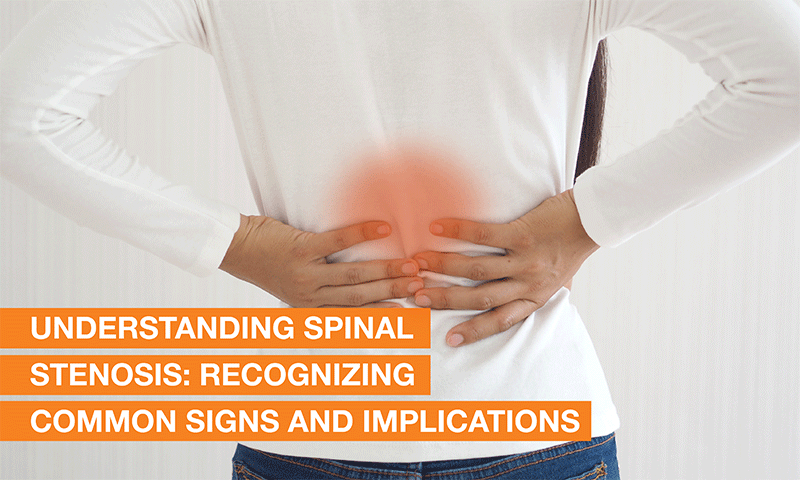Request Appointment
Enter your details and we will be in touch with you shortly;
Or call
8655885566
between 8 am and 8 pm.


Spinal stenosis is a condition that affects the spinal canal, leading to the narrowing and compression of the nerves within. As the narrowing progresses, it can result in a variety of symptoms that can have a significant impact on a person’s quality of life. Recognizing its signs is the first step towards finding relief and improving your well-being. In this blog, we will explore the common signs of spinal stenosis and the implications of these symptoms.
Back pain is often one of the initial signs of spinal stenosis. This pain can vary in intensity and may radiate from the lower back to the buttocks or thighs. It’s important to note that spinal stenosis pain tends to worsen while walking or standing for extended periods, as these activities increase pressure on the affected nerves.
As this condition progresses, it can lead to leg numbness and weakness. This occurs due to the compression of nerves in the spinal canal, affecting their ability to transmit signals to and from the legs. Patients might experience a tingling sensation or even loss of sensation in their legs, making it difficult to perform everyday activities.
Spinal stenosis often results in nerve compression, which can cause a range of symptoms beyond back pain and numbness. Compression of the spinal nerves can lead to shooting pain that radiates down the legs, commonly known as sciatica. This pain can be excruciating and hinder mobility.
Spinal stenosis signs and symptoms, such as leg numbness, weakness, and pain, can significantly limit a person’s mobility. As walking and standing become more challenging, individuals may find it difficult to engage in regular physical activities, affecting their overall quality of life.
Spinal stenosis symptoms can impact daily life in various ways. Simple tasks like walking, grocery shopping, or even sitting for prolonged periods can become painful ordeals. The reduced ability to participate in social and recreational activities can lead to feelings of isolation and frustration.
If left untreated, spinal stenosis can lead to further degeneration of the spine and surrounding structures. This can exacerbate the symptoms and make them more difficult to manage. Early detection and intervention are crucial to prevent the condition from progressing.
Don’t let spinal stenosis go unnoticed. Recognizing the common signs of spinal stenosis is essential for early intervention and effective management of the condition. Symptoms like back pain, leg numbness, weakness, and nerve compression should never be overlooked. If you’re experiencing any of these symptoms, consulting a healthcare professional can lead to proper diagnosis and effective management, allowing you to regain your comfort and mobility.
Call 086558 85566 to book your first free consultation with a spine specialist at QI Spine today and say yes to active living free from pain and discomfort.
Visit our nearest clinic for your first consultation